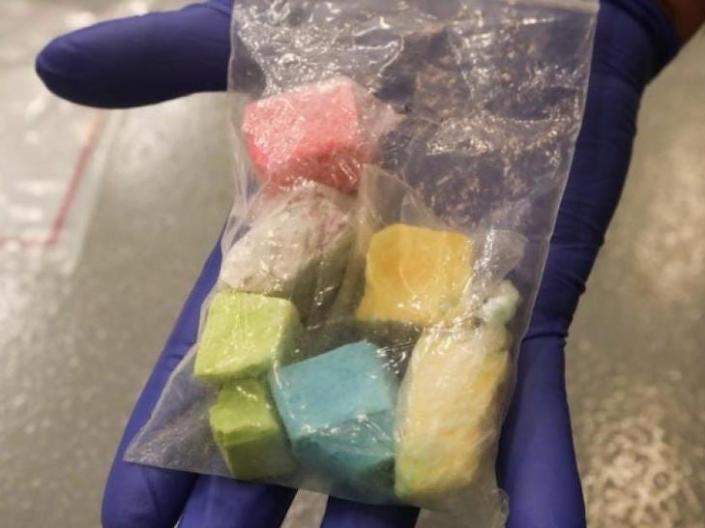Culiacán, SINALOA — The US Drug Enforcement Administration and police departments across the United States have been warning about a new cartel strategy to sell fentanyl: pushing “rainbow-colored” fentanyl pills to hook children and young adults.
But operatives in the Sinaloa Cartel, the Mexican criminal organization behind the biggest shipments of fentanyl to the US, told Insider their intention is actually the opposite.
US authorities began their campaign several months before Halloween, warning of alleged attempts by Mexican drug cartels to entice kids into drugs by selling rainbow-colored fentanyl pills and adding fentanyl to Halloween candies.
In a statement published on August 30, DEA administrator Anne Milgram warned the public of “an alarming emerging trend of colorful fentanyl available across the United States.”
“Rainbow fentanyl — fentanyl pills and powder that come in a variety of bright colors, shapes, and sizes — is a deliberate effort by drug traffickers to drive addiction amongst kids and young adults,” Milgram said.

News stories and broadcasts began showing photos and videos of rainbow-colored pills and powder from seizures across the country. The reports described large quantities of colorful pills and cautioned parents to be on the lookout for them or things like them in their children’s candy.
A cartel operative and a cook involved in the manufacture and shipment of fentanyl from Mexico told Insider that their intention was “actually the opposite” of what Milgram described.
The coloring “is to make it look different than coke or white heroin,” the fentanyl cook, speaking on the condition of anonymity, told Insider.
In 2021 alone, more than 100,000 people in the US died from fentanyl overdoses. Most were accidental deaths after using a substance like cocaine, heroin, or fake Percocet pills that had been laced with the powerful opioid.
“We know that some of the dealers in the US started mixing cocaine with ‘fenta’ without letting their buyers know, and that is very dangerous,” the operative said.
“Also we mix some of the heroin with fentanyl to make it more powerful, but we mark it, to let the buyer know that this one has ‘fenta,'” he added. “Whatever happens when it’s taken from our hands, it’s not our problem.”

The cook with the Sinaloa Cartel said that by adding food coloring to pure fentanyl, it would be impossible for dealers in the US to mix it with something else without the final user noticing.
“We get all the blame for the deaths, but we send a clean product, pure quality ‘fenta,’ or if its blow, just blow,” he said. “If we are adding ‘fenta’ to the heroin, we are very clear that our batch has ‘fenta’ in it.”
Despite the scare, a Washington Post review of news reports from mid-August to late October found only one case of accidental ingestion of “rainbow fentanyl” by a 2-year-old.
On November 17, however, the US Treasury Department announced sanctions against members of La Nueva Familia Michoacana, another Mexican criminal group, and accused it of marketing ‘rainbow fentanyl’ in “a deliberate effort to drive addiction amongst kids and young adults.”
The Sinaloa Cartel operative denied that his organization is targeting kids or young adults in the US as their final users.
“Why would we want to make kids addicts? What good would that do to us?” the cook said. “We want to sell what the people are asking for in the US, but not to kids or people who do not want to take drugs.”




